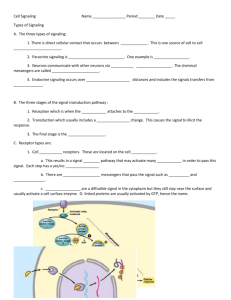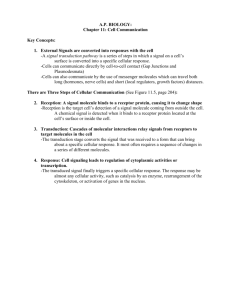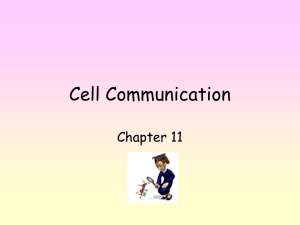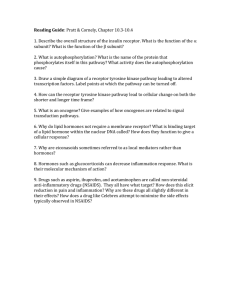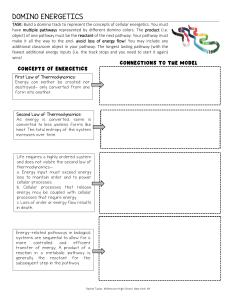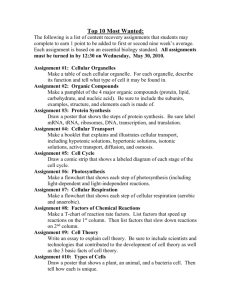DAVIS HIGH SCHOOL AP BIOLOGY
advertisement
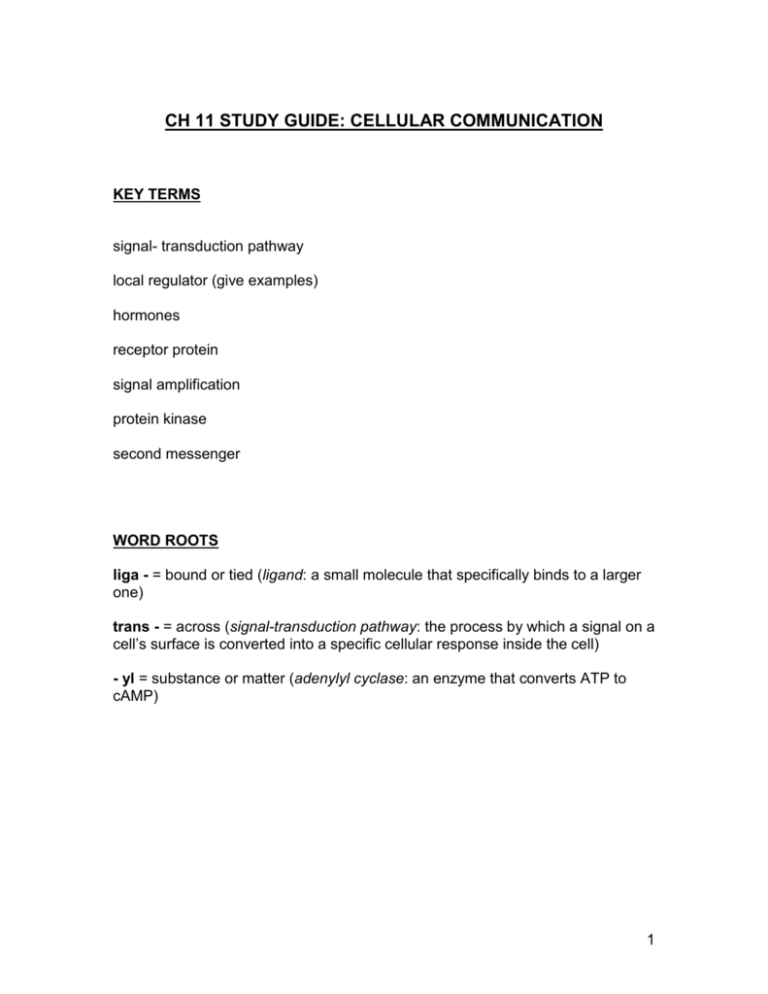
CH 11 STUDY GUIDE: CELLULAR COMMUNICATION KEY TERMS signal- transduction pathway local regulator (give examples) hormones receptor protein signal amplification protein kinase second messenger WORD ROOTS liga - = bound or tied (ligand: a small molecule that specifically binds to a larger one) trans - = across (signal-transduction pathway: the process by which a signal on a cell’s surface is converted into a specific cellular response inside the cell) - yl = substance or matter (adenylyl cyclase: an enzyme that converts ATP to cAMP) 1 QUESTIONS 1. Complete this cell - signaling table: STAGE MAIN EVENT 2. What are three signal receptor proteins? 3. Describe how the G protein receptors function. 4. What kind of chemical messengers do not require membrane proteins in order to enter the cell? (i.e. What is their chemical make-up?) 5. Give two examples of “second messengers”. 6. What are the two cellular responses to a signal? 7. A hormone is available to all cells in the body. why do some cells respond to this hormone, and others cells do not respond? (Remember enzymes, the same general principle is at work here.) 2
